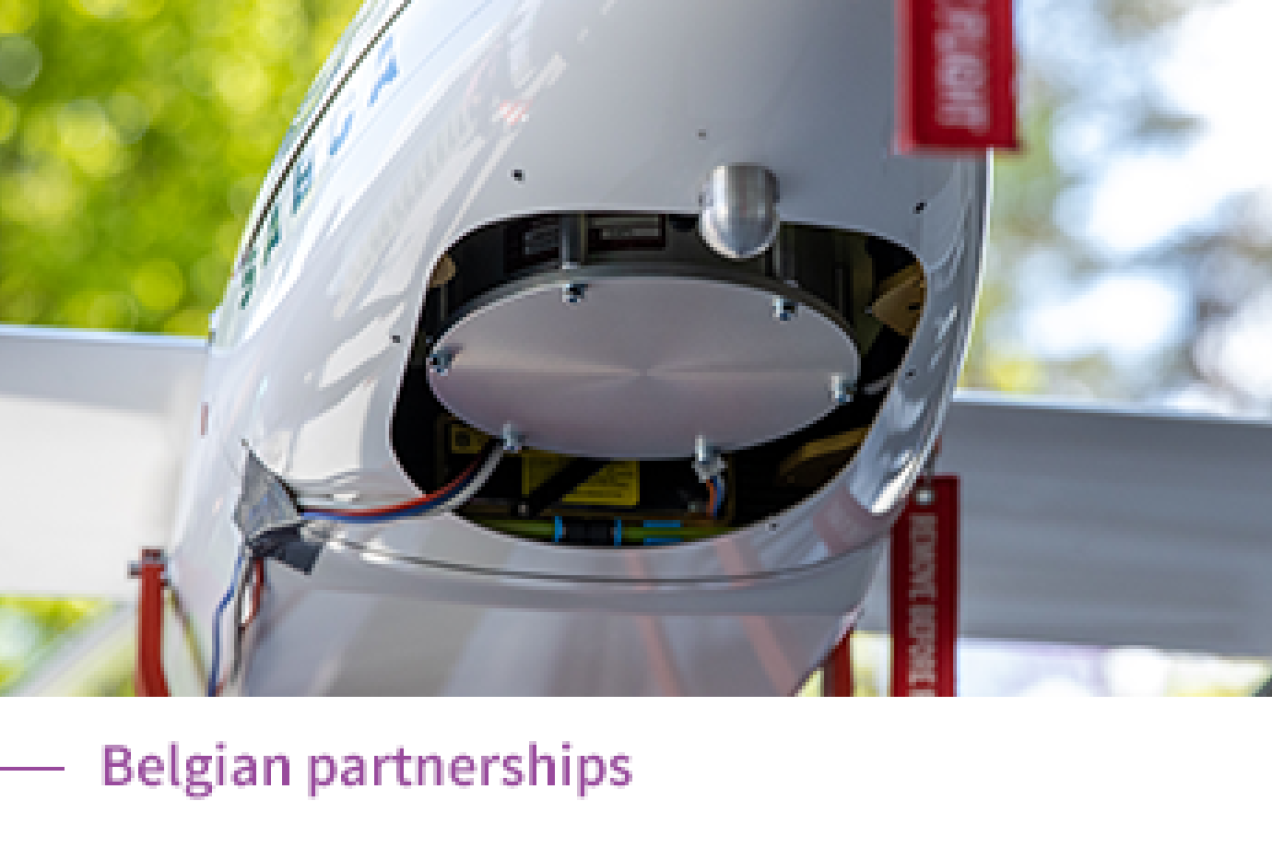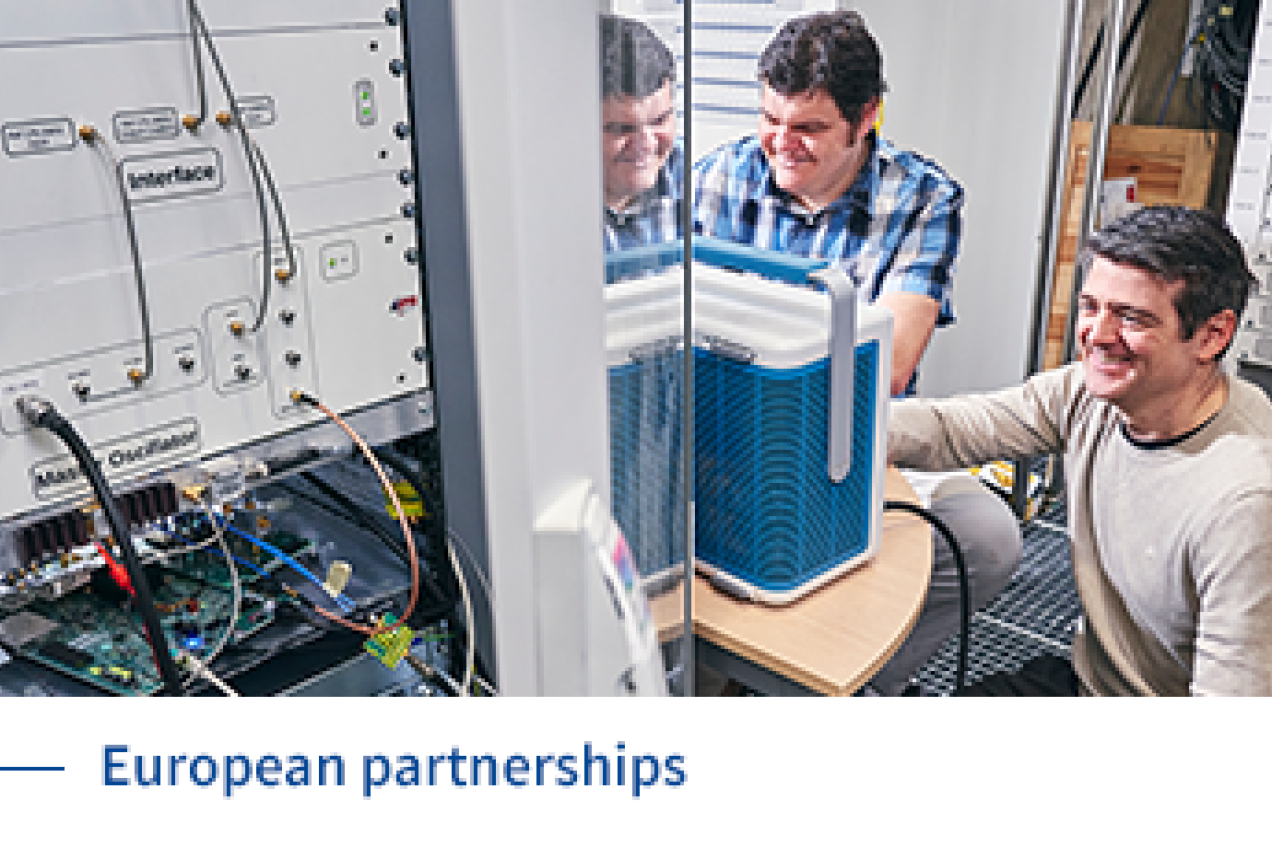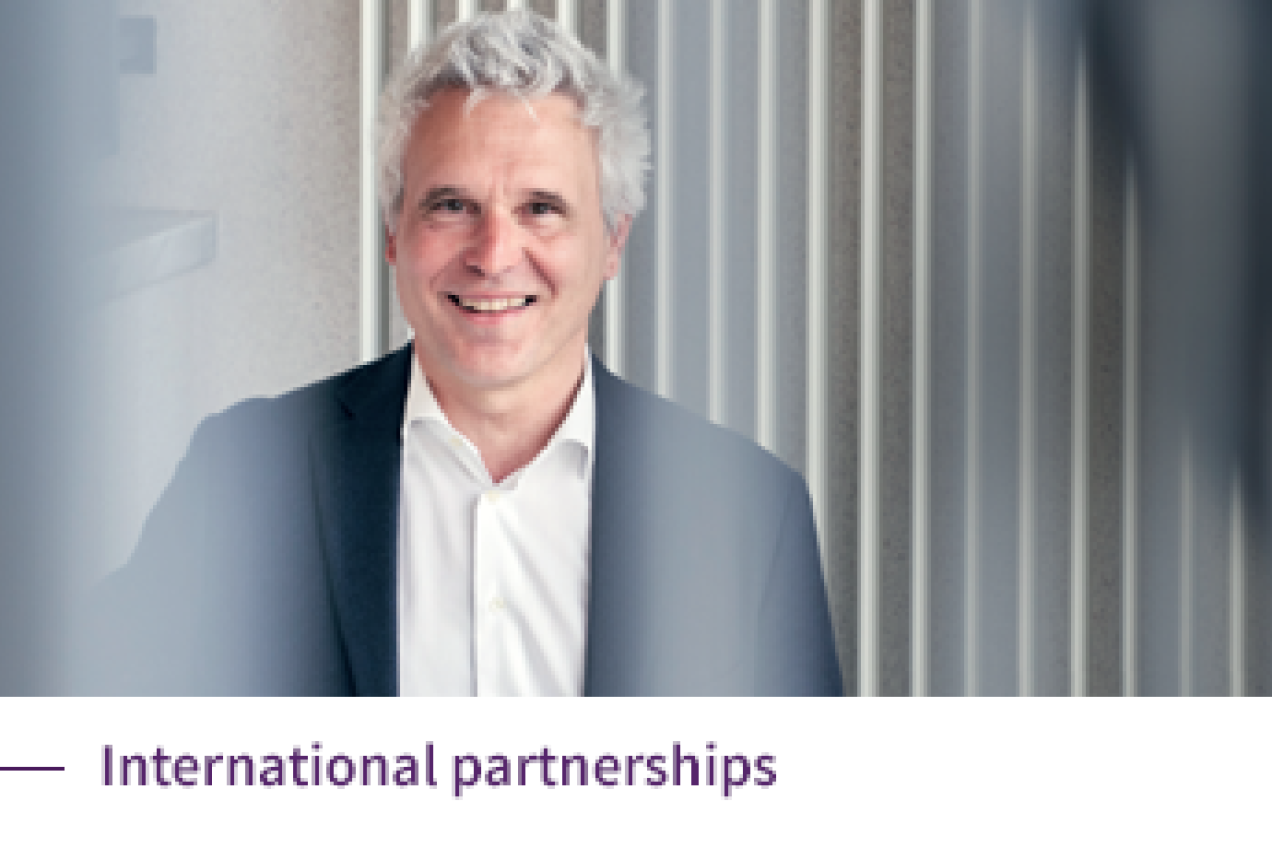Radioactive waste: from origin to final destination
Experienced research partners SCK CEN and ONDRAF/NIRAS interweave fundamental and applied research
How do we ensure safe disposal of radioactive waste? And in the long run too? This, has been research fodder for the nuclear research centre SCK CEN for decades, commissioned by the Belgian radioactive waste manager ONDRAF/NIRAS. To achieve even better solutions, the two agencies are interweaving their research programmes into a public-public partnership. That legal structure enables us to combine our efforts to further fuel specific knowledge and expertise.
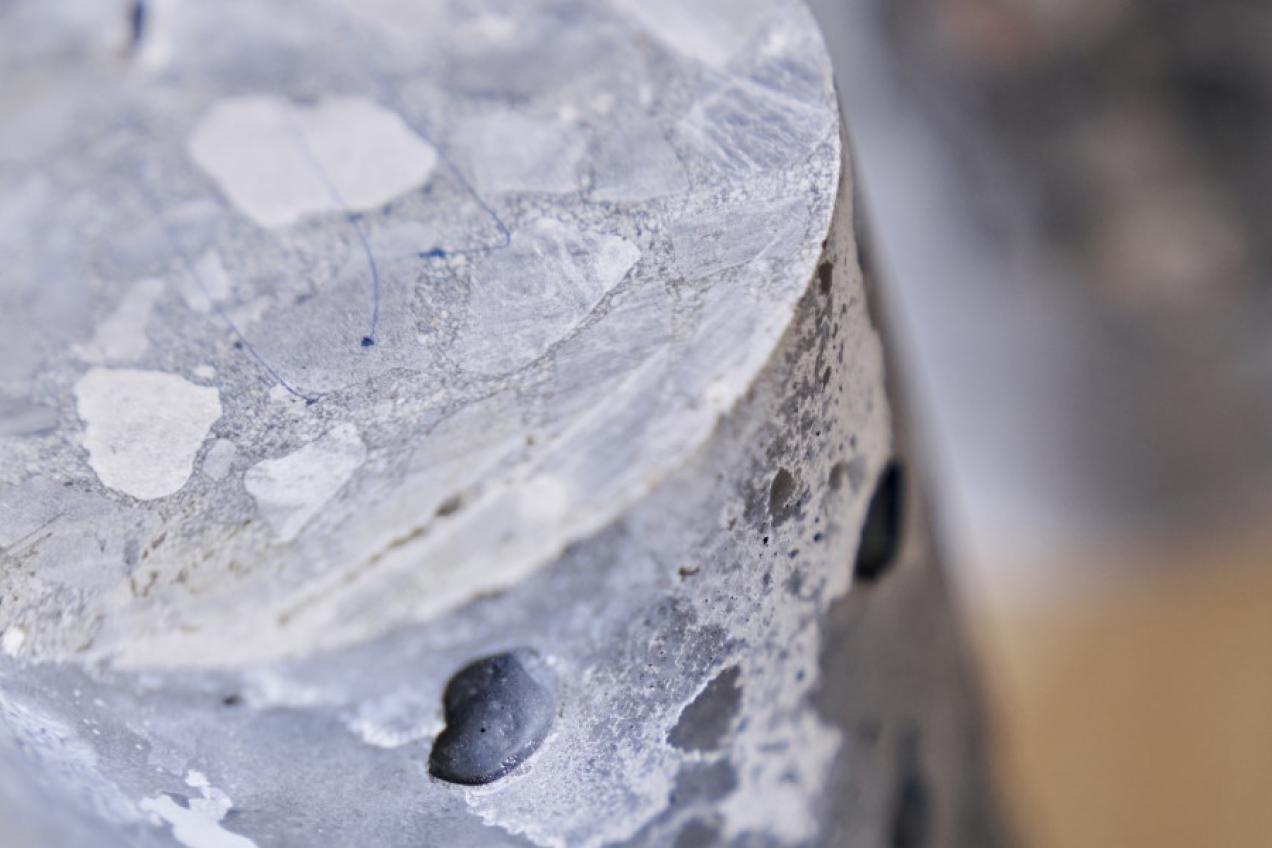
“Radioactive waste is a broad term. The waste comes from power generation, as well as nuclear medicine, agriculture and industry. The term therefore includes multiple waste types, subdivided by activity level or life span. Each type of waste requires a different management route up to, and including, disposal,” explains Christophe Bruggeman, an expert at SCK CEN. Highly radioactive and/or long-lived waste is one type of waste. For that type, geological disposal as a management solution has been on the radar for some time. In the 1970s – the very beginning of Belgium’s nuclear energy era – the nuclear research centre began to explore that avenue. “At first we carried out tests in laboratories, but soon we felt the need for an underground laboratory to test geological disposal against reality. The goal was to demonstrate its safety and feasibility at a representative scale,” he explains. In 1980, SCK CEN began to excavate that underground laboratory, called HADES. HADES later came to be managed by ESV EURIDICE, a joint economic venture between SCK CEN and Belgian waste manager ONDRAF/NIRAS.
That partnership allowed both partners to sample the added value of working together. By bringing complementary competencies under one banner, scientific depth and proposed management solutions could be linked together. There was a further appetite for that, as it turns out. They recently signed a new public-public partnership. With that signature, they are making a promise in writing to extend the existing partnership to all research aspects for both short-, medium- and long-term radioactive waste management. “In fact, two experienced and highly specialist actors are joining forces and broadening their focus to the entire management chain. This ensures a good flow of knowledge and skills, which allows the necessary management solutions to be accelerated or implemented,” enthuses Christophe Bruggeman.
Broad knowledge spectrum
The public-public partnership covers a broad spectrum of knowledge domains. “For example, we are studying the behaviour of natural and artificial barriers. How do those barriers help retain radioactivity? How does the waste affect the properties of those barriers? For example, what is the effect of heat-emitting waste? How does the clay layer prevent radionuclides from spreading further as the artificial barriers degrade? In addition, we have particular regard to keeping our underground laboratory HADES up to date, and to the long-term acquisition, processing and validation of measurement data. The research is already at an advanced stage, but it takes on a new dimension thanks to the combination of all these angles,” Christophe Bruggeman explains in detail.
According to the expert, this renewed collaboration ensures that we will continue to take into account the latest scientific insights and technological innovations in the development and implementation of the various management solutions in the coming period. This will lead to increasingly better solutions for radioactive waste. And it has not come a moment too soon. After all, one of the largest dismantling sites is right around the corner. With the nuclear phase-out law of 2003, the federal government decided to close down the nuclear power plants step by step. After closure, the nuclear power plants must be dismantled. “Experience tells us that we can repurpose 98% of the material, but that remaining 2% is radioactive waste. That waste deserves specific, adapted management,” says Christophe Bruggeman.
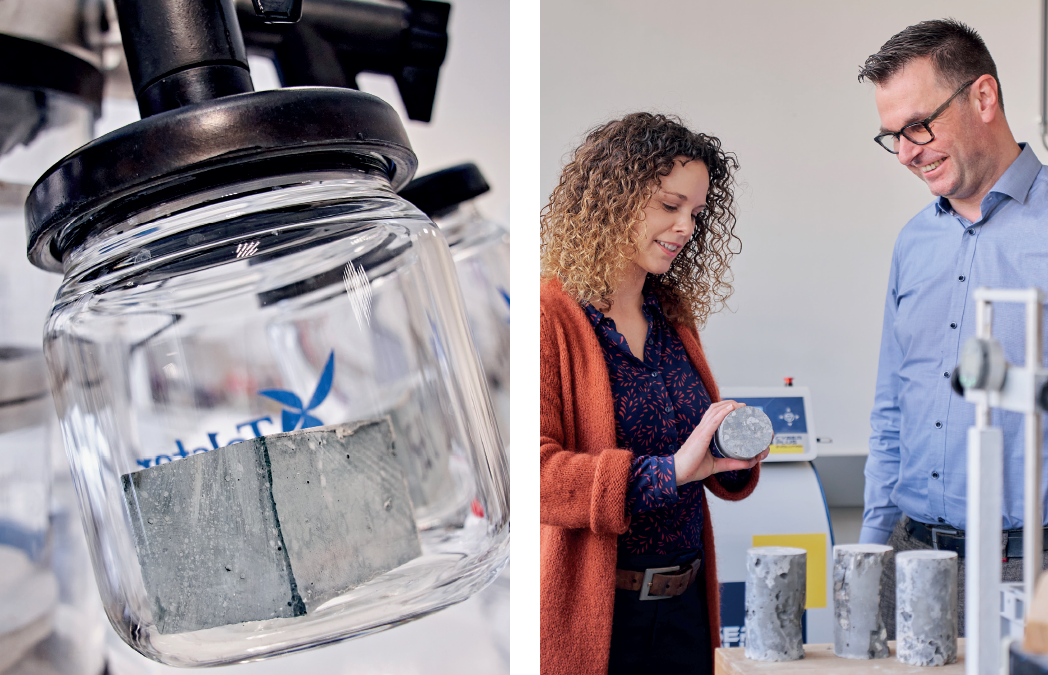
HADES: decade-long experiment over halfway complete
Disposal experiments take time. “We need to be able to guarantee the safety of geological disposal for the very long term. We’re studying very slow processes: that’s why experiments can even take decades,” says Christophe Bruggeman. One example of this is the ‘PRACLAY Heater’ experiment. This large-scale test is intended to study the impact of heat on a deep clay layer. In a real repository, the highly radioactive waste will give off heat for hundreds to several thousands of years. With heating elements, researchers are mimicking that heat release. Specifically, they are keeping the place where the gallery wall and the clay meet at a temperature of 80°C for ten years. “Ten years is enough to be able to make a reliable evaluation of the effect on the clay,” Christophe Bruggeman explains. The experiment began in 2014 and is now more than halfway through. “We equipped the gallery and the surrounding clay with measurement devices to closely monitor the experiment. To date, we are recording the same results as our small-scale and short-term experiments. In other words, the project is reaffirming our earlier conclusions.”
SCK CEN as a knowledge compass in the decomissioning process
The collaboration focuses specifically on radioactive waste, but SCK CEN is also playing a key role in the forthcoming decomissioning. This decommissioning offers economic opportunities for Belgian industry. For this reason, the federal government included decommissioning in its ambitious recovery plan. This Recovery and Resilience Plan (RRF) is intended to revitalise the Belgian economy after the blow it was dealt by the corona crisis. In total, it is releasing 5.9 billion euros. 25 million euros will flow to research and development in sustainable decommissioning. In doing so, the amount of radioactive waste will be minimised in a cost-effective manner.
The intention is that SCK CEN will act as a knowledge compass for Belgian industry. “We have built up extensive dismantling and decommissioning experience. We are familiar with the current requirements from the Federal Agency for Nuclear Control for the release of materials, and the challenges surrounding the management of radioactive waste. With that knowledge, we can guide Belgian players smoothly. We will help them to improve their existing technologies and procedures and make them ready for the market,” says Nele Weyens, RRF project leader at SCK CEN. These technologies cover several areas: from decontamination techniques for significantly reducing the amount of waste, to characterisation techniques for precisely determining whether materials can be given a second life. It also includes extensive safety testing to ensure the stability and thus recoverability of the waste, as well as modern ways of managing waste streams. “These include artificial intelligence or 3D visualisation, for example. SCK CEN will invest in new facilities for validating techniques and innovations.”
Knowledge export
It is anticipated that Belgian players will be able to export their decommissioning technologies abroad later on. “In the next ten to fifteen years, many countries will want to start decommissioning their power stations. It’s just that there isn’t enough capacity at the moment to dismantle all those nuclear power stations at the same time. That means there’s room for new players in the market. This creates prospects for Belgian industry wanting to specialise in the nuclear sector,” concludes Nele Weyens.
Extensive decommissioning and dismantling experience
SCK CEN has solid expertise thanks to the decommissioning and dismantling of numerous nuclear facilities, including the BR3 pressurised water reactor, the Thetis research reactor, and the former MOX plant Belgonucléaire. The dismantling of hot cells–a shielded, ventilated room in which specialists can handle radioactive material from a distance – also provided a mountain of expertise. In 2021, the research centre added cyclotrons to that list. Commissioned by the Australian company Telix Pharmaceuticals Limited, SCK CEN dismantled two cyclotrons at the radiopharmaceutical production facility in Seneffe, Belgium. Both cyclotrons were removed in one piece and taken to the SCK CEN site in Mol for further dismantling. This approach is unique, even by international standards. It gives the client the opportunity to reuse the space immediately. The construction of a new, state-of-the-art production facility for medical radioisotopes and pharmaceuticals could therefore begin shortly after decommissioning.
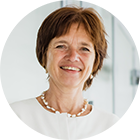 |
Responsible research As a nuclear expertise centre, SCK CEN has been fulfilling its societal role since the very beginning. When the first nuclear power plants started up, we began looking for a solution for the safe management of long-lived radioactive waste. This led to the opening of our underground laboratory HADES. Today, we use our knowledge and expertise as a compass for safe and efficient radioactive waste management, dismantling, sustainable nuclear energy, innovative research on the effects of radiation and solutions to cancer, with respect for people and the environment. We stand for responsible research for a sustainable world. Hildegarde Vandenhove |

